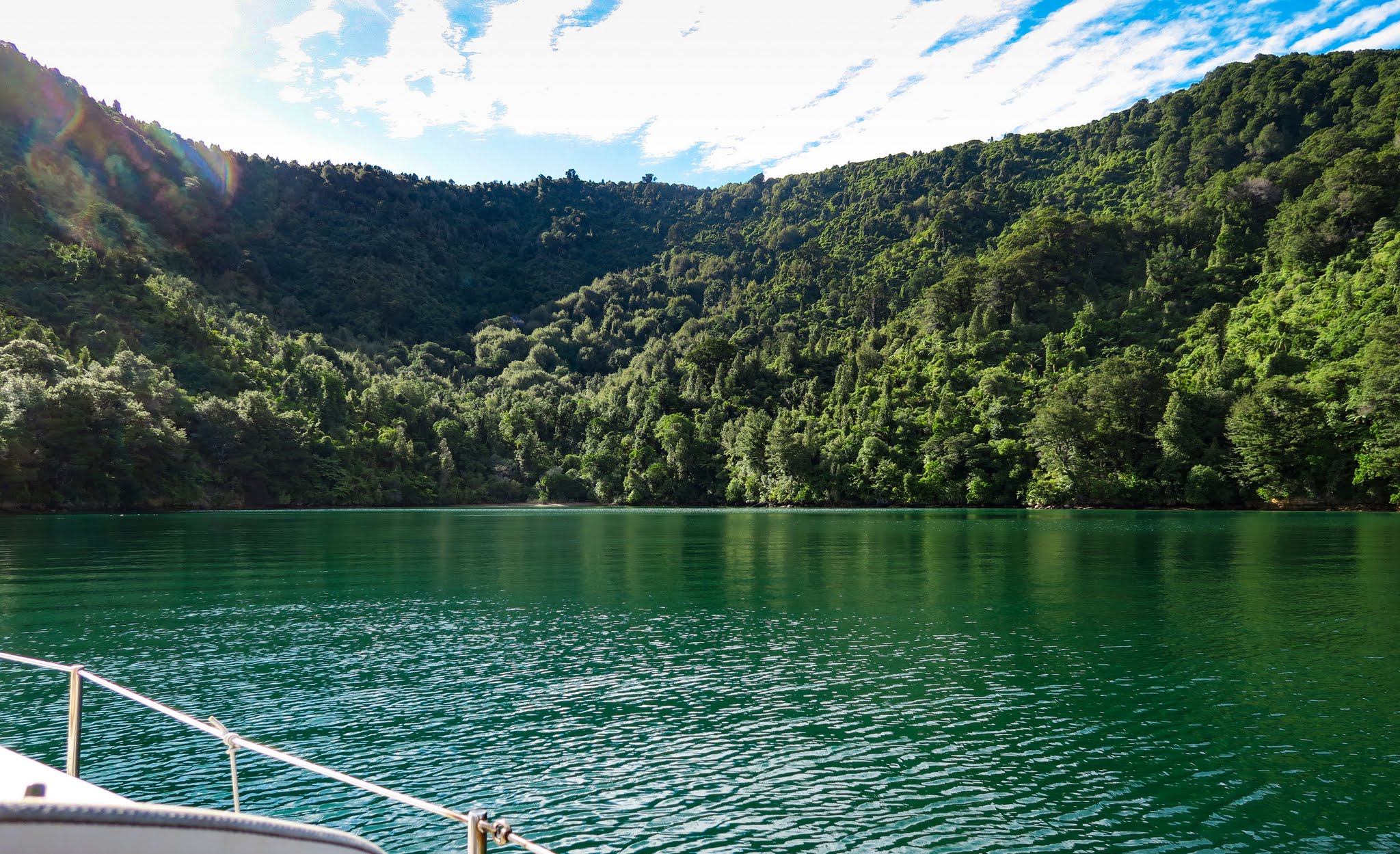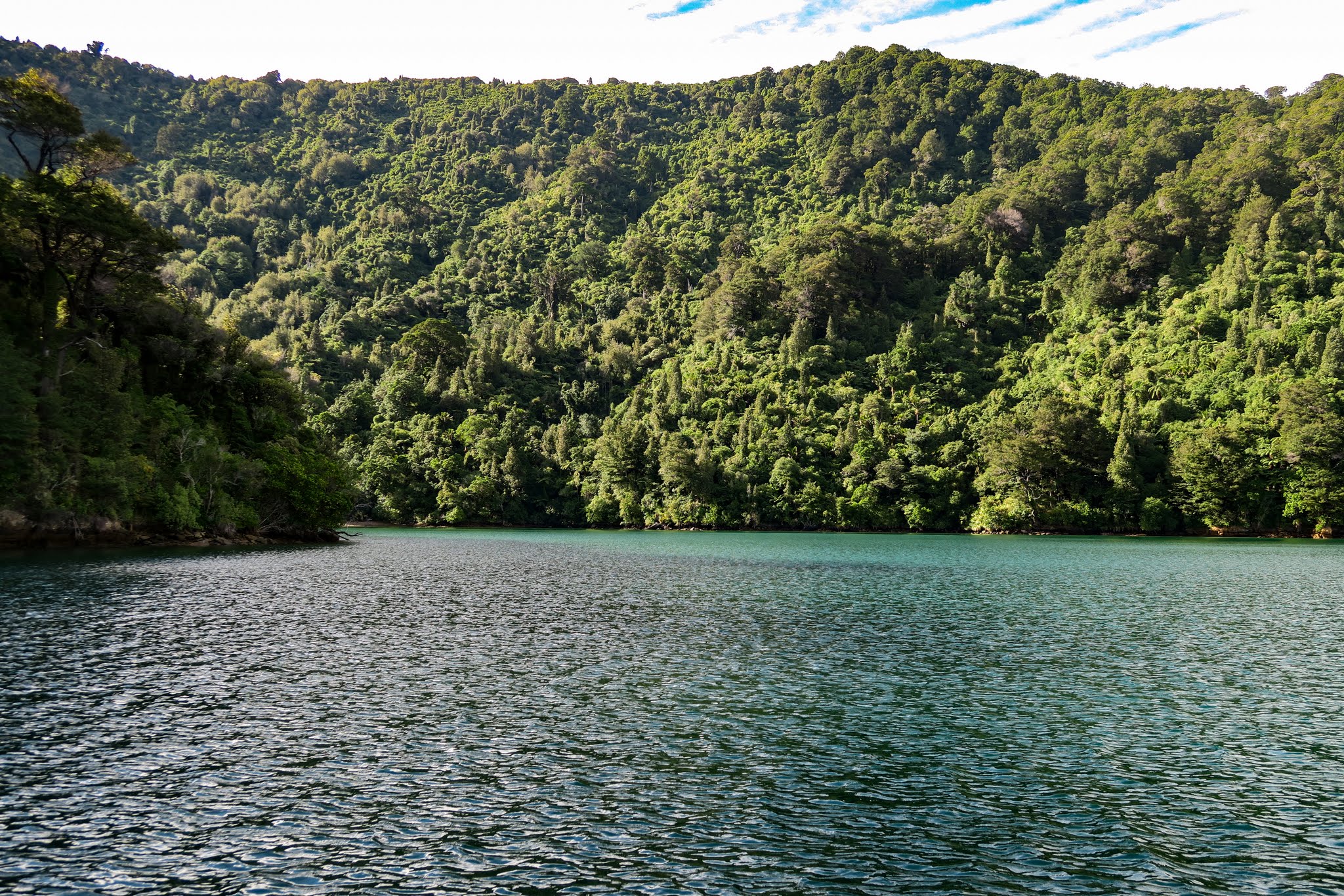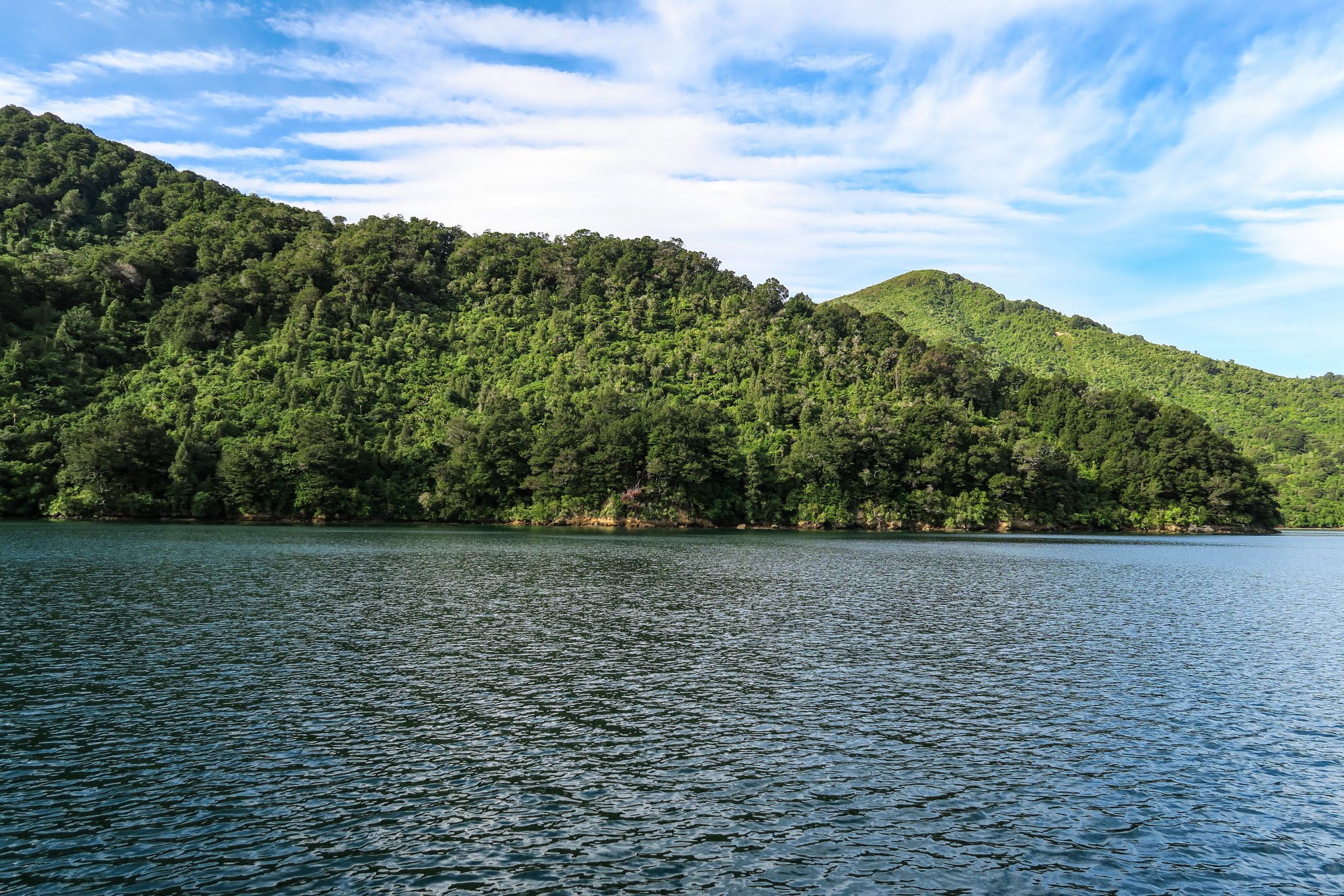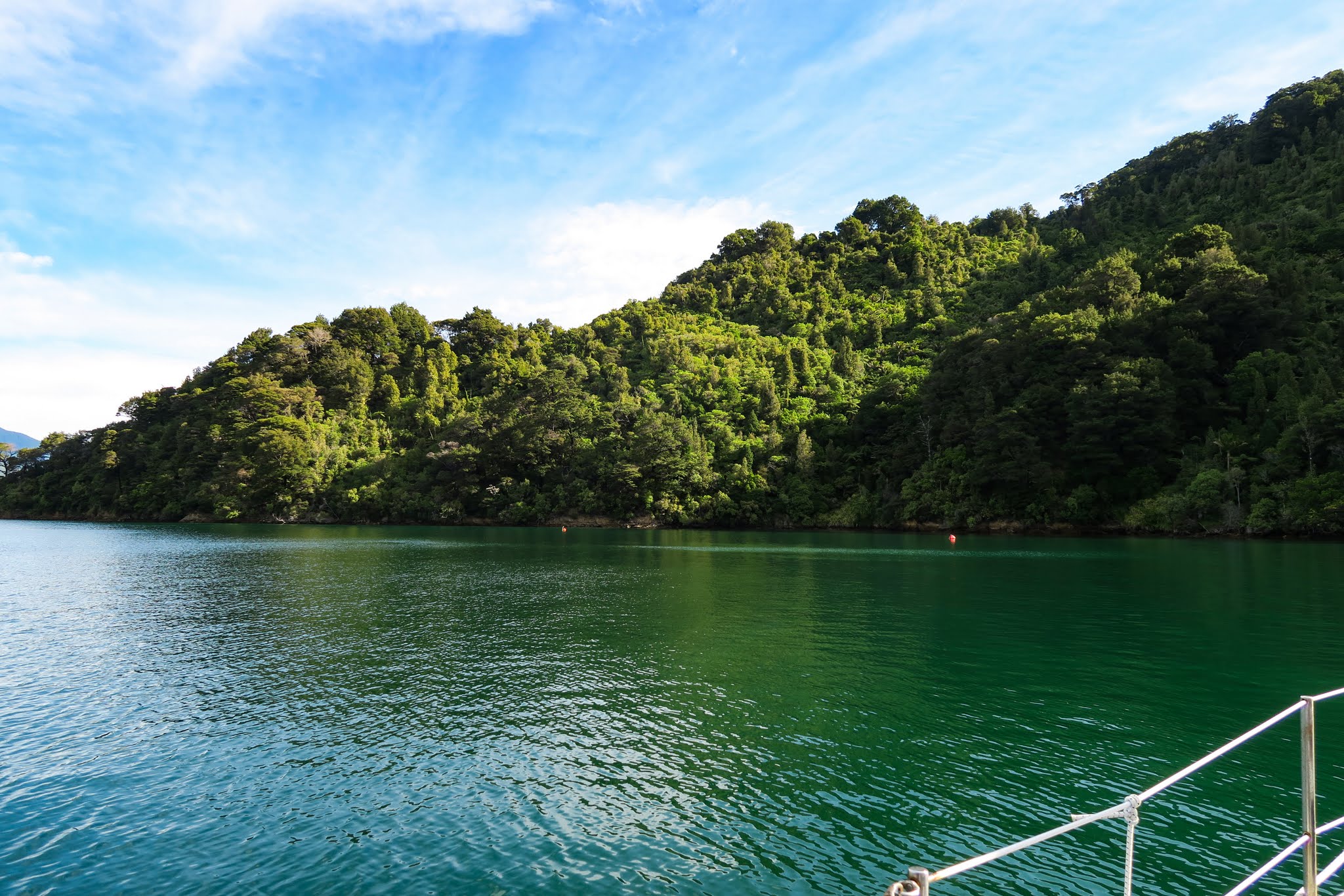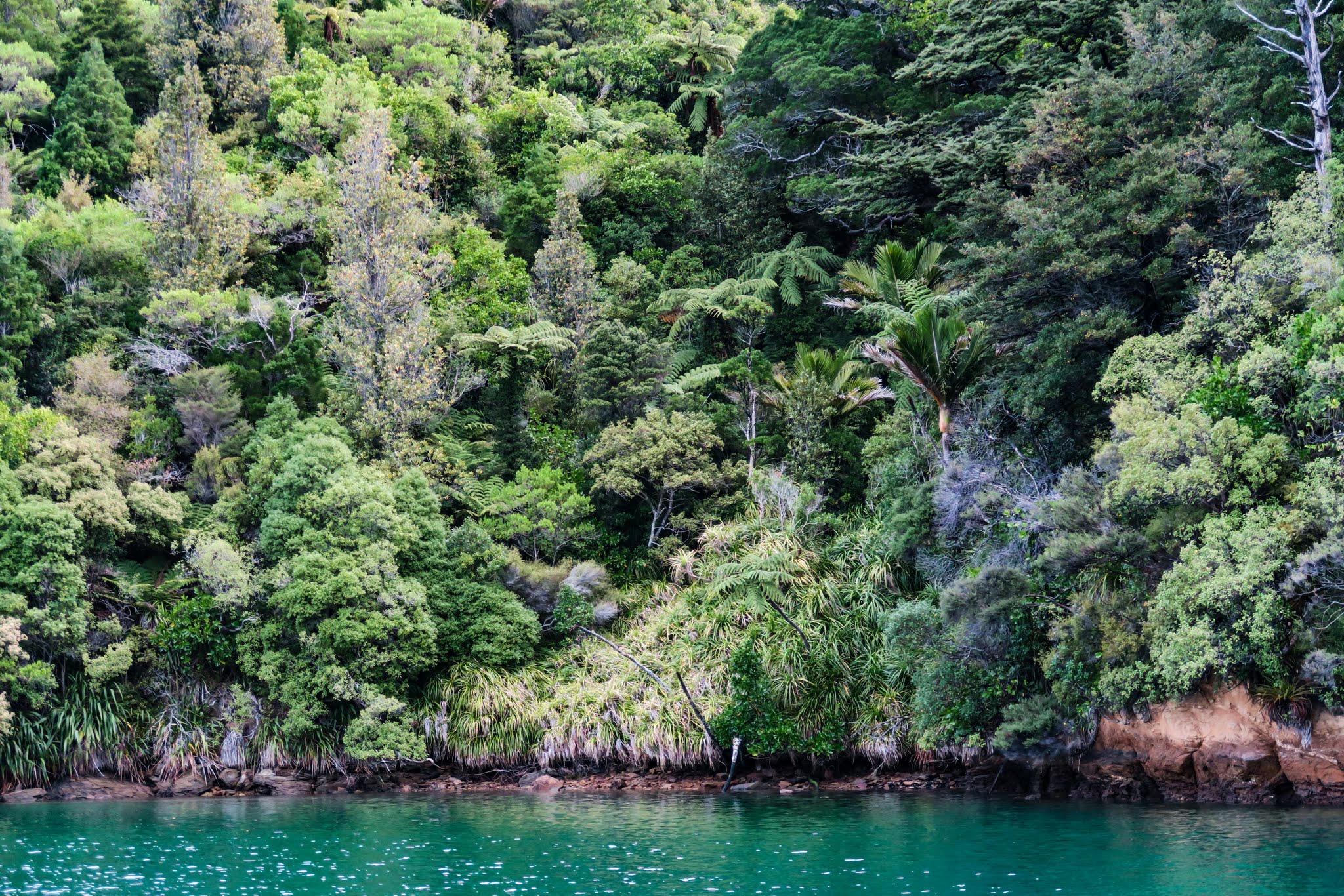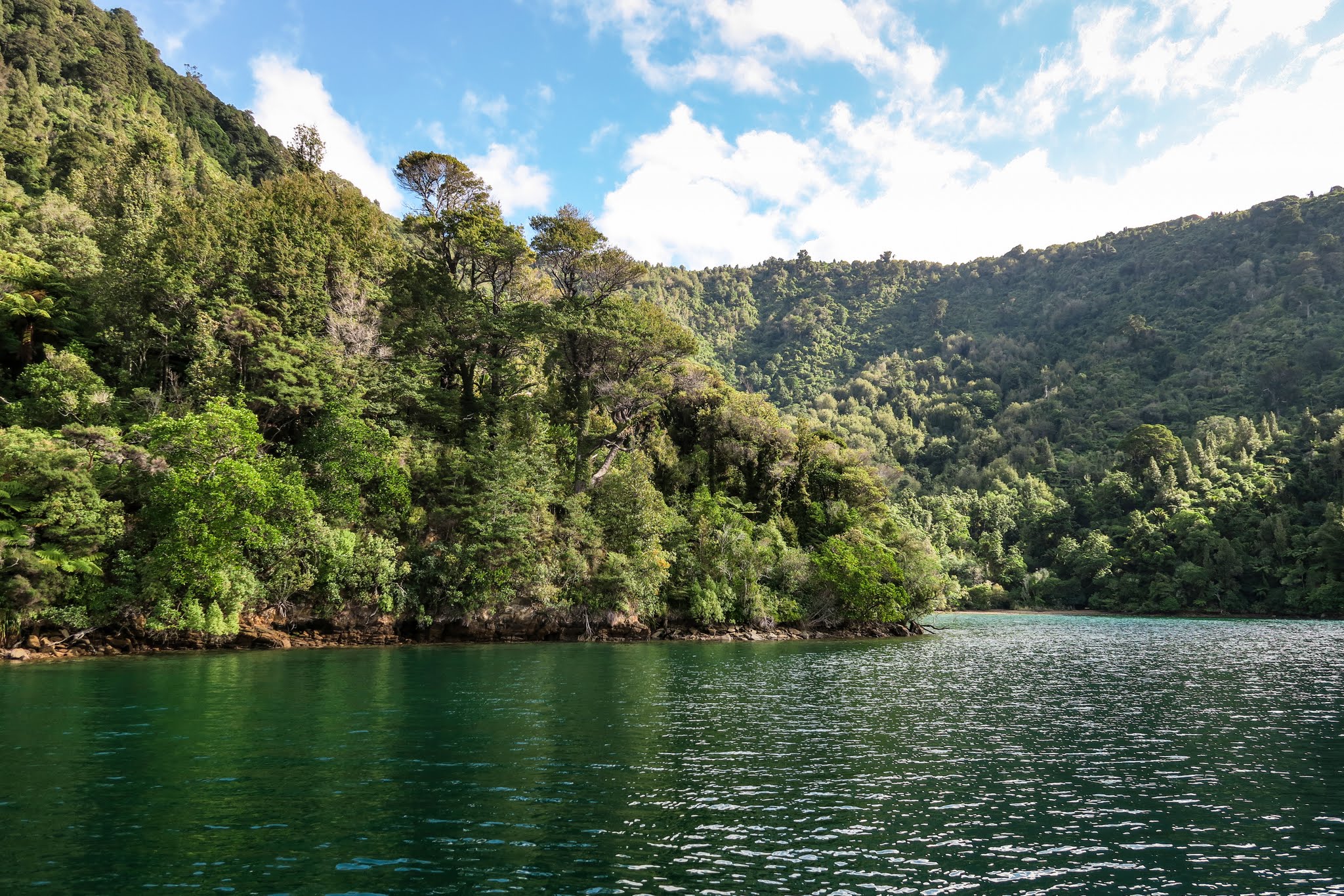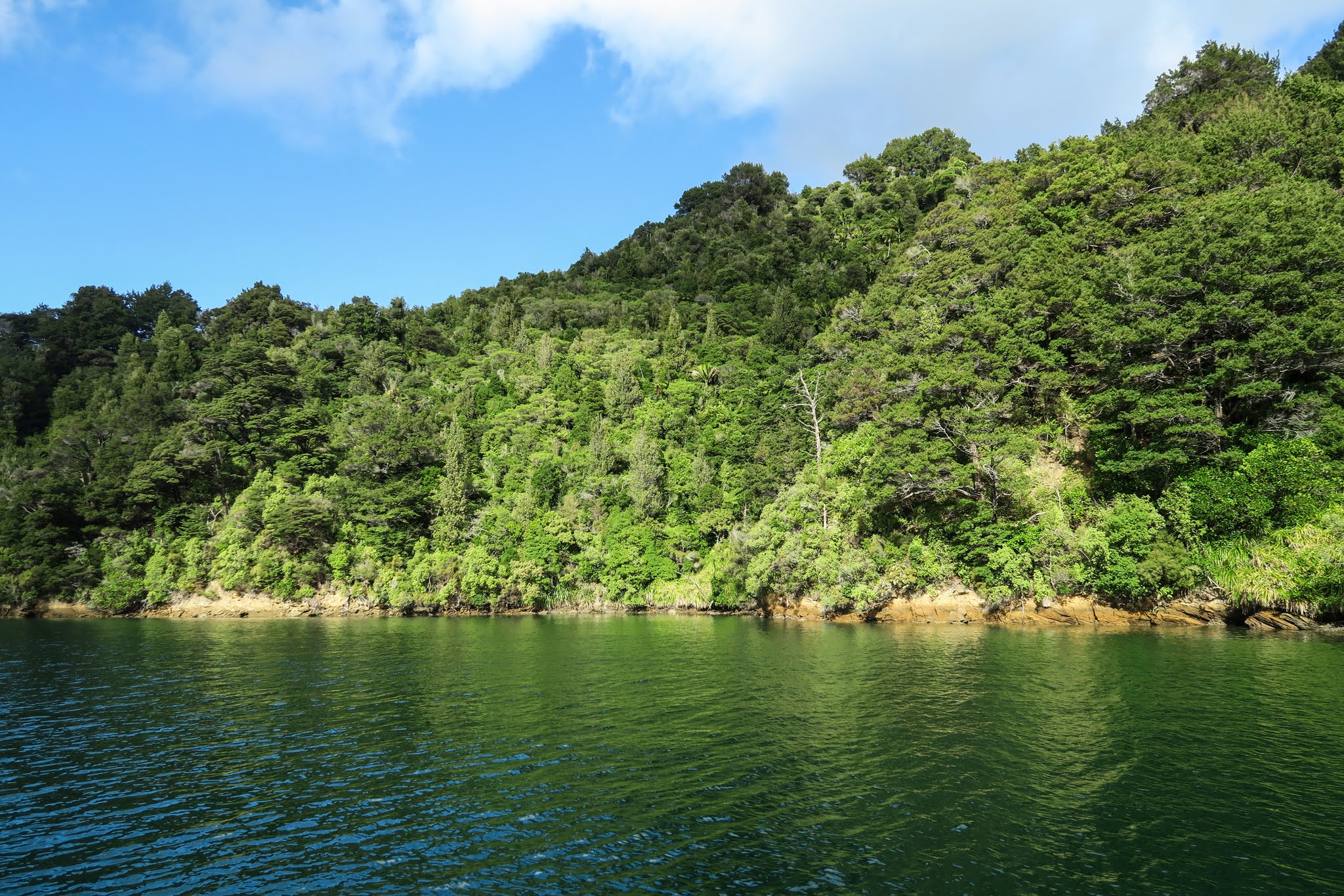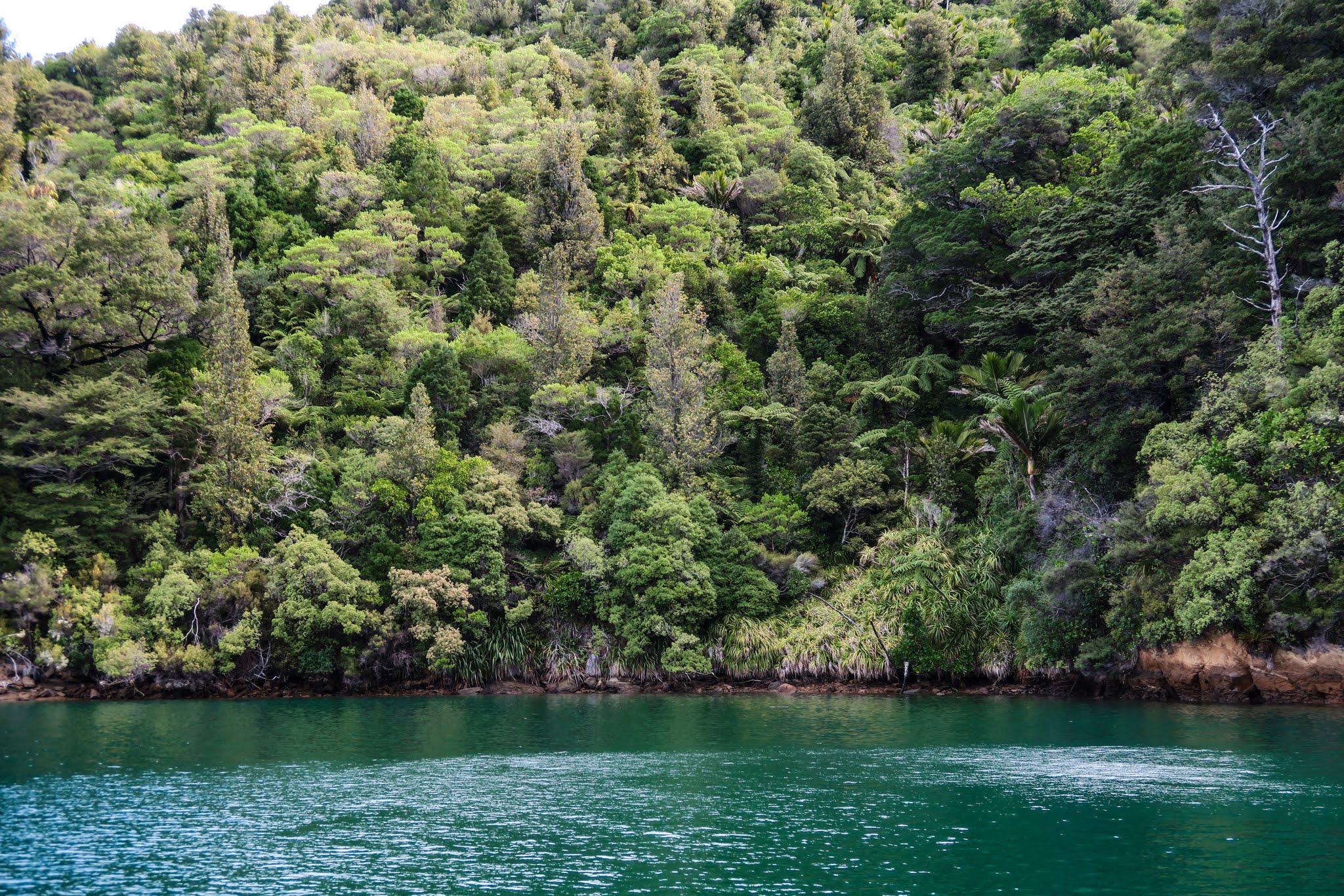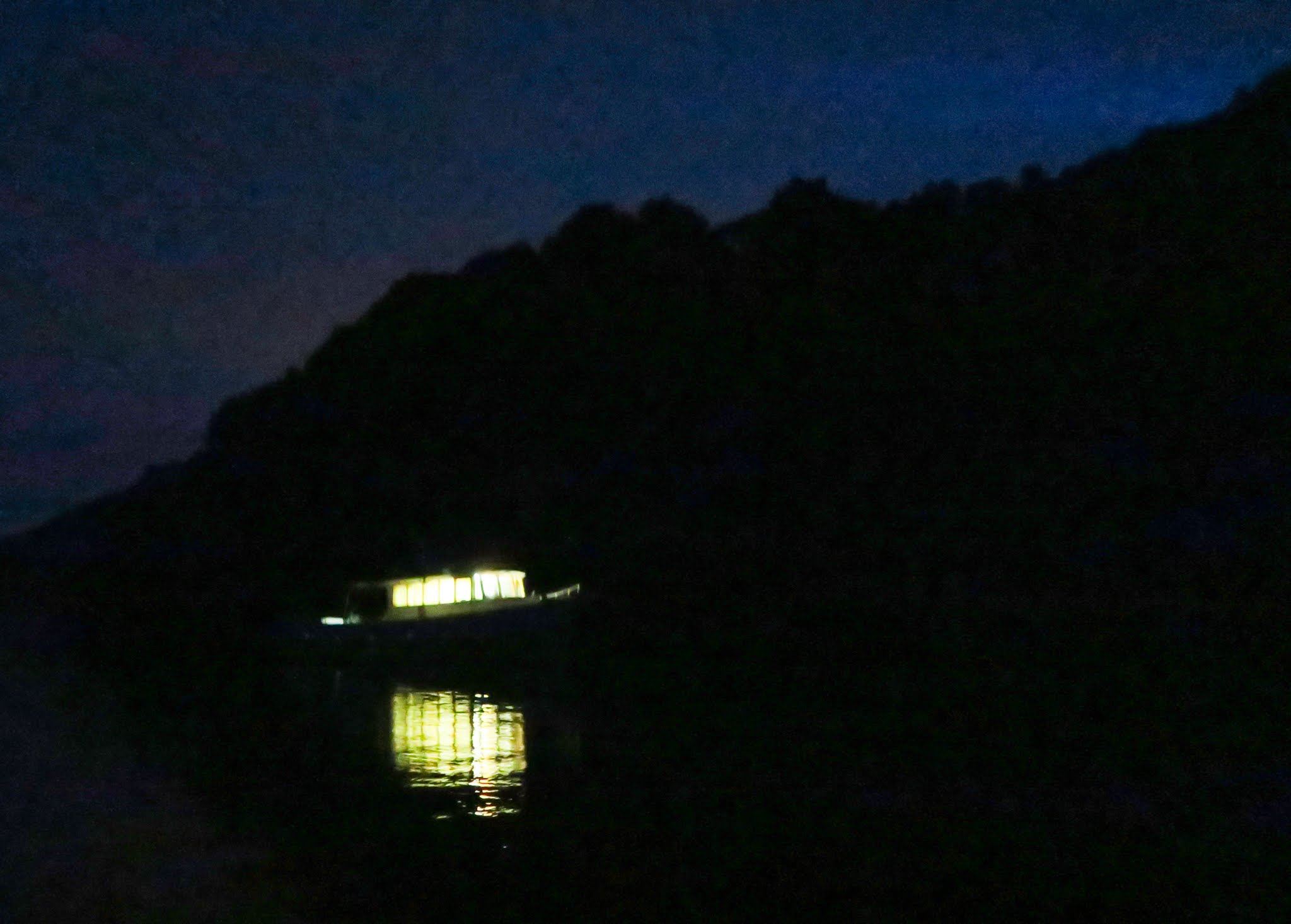March 29, 2016
As Legacy’s itinerary planner, I now had some decisions to make. The mail boat cruise had given us plenty of information, but it also brought an unexpected complication. By now, fall had arrived in New Zealand, the clock had started to tick as we’re approaching the end of our time here, and there’s still lots more to see before we get to Nelson.
With a period of warm, settled weather arriving, the sensible thing to do would be this: appreciate the tour we had of Queen Charlotte Sound and use this weather window to make the passage to neighboring Pelorus Sound (which involves going back out in the open ocean for a few hours). But that didn’t feel right to me; the mail cruise was meant to help us decide where to cruise, not to take the place of it. After wrestling with the decision, I went back to the guide book and read again a remark the author made, that many consider Queen Charlotte Sound to be the most beautiful. I realized it would be a shame to rush through this area if it might be our favorite.
With that, I decided we should cruise a few of these big bays and wait for a later weather window to move on. I made a plan, Rich plotted the first course, and we were set. Except I still wrestled with the decision, worried whether we were doing the right thing. One other thing bothered me: between our Grove Arm cruise and the mail run, there were two bays we hadn’t seen. One I hoped to hike to from the Pelorus side, but the other would be a miss.
I consulted our cruising guide again (New Zealand Cruising Guide Central Area by Keith W J Murray). With any given guide book, you have to learn the author’s style and do some reading between the lines. In Keith Murray’s case, he’s really thorough about wind directions and anchoring techniques, but he’s not into detailed descriptions about the look of a place. The highest compliment he gives, only occasionally, is to call a bay “attractive,” or very rarely, when it’s really special, “very attractive.” I think he’s used the term “extremely attractive” twice in the entire book. I’ve also learned that “popular” generally means it’s “attractive.”
In this case I was reading about the bay we’d miss: Double Bay, and specifically the east bay within it called Kumutoto. The author used the words, “very attractive,” “popular,” and, “most excellent anchorage.” Wow, he must have darn near peed his pants when he saw this place! Thus, I suggested to Rich that we out to add it into our plan. And so the route was redone as we prepared to leave, but I still kept second guessing myself.
Our new friend, Hsuan, came by to visit us and brought us a special surprise gift of lobster from Julian’s freezer. We visited awhile, then the lure of one final garlic prawn pizza called to us, and we all decided to go out to lunch. By the time we finished, an afternoon wind had come up. With yet another round of indecision about whether to stick with our plan to leave today or wait until tomorrow. We decided to leave today. Kumutoto wasn’t very far away; so we didn’t need to be out in the wind very long.
And so we motored out of Picton, into the afternoon wind, across Queen Charlotte Sound, and over to Double Bay. As we entered this protected area, the wind dropped. We still had a over a mile to go, but already all my doubts and second guessing were falling away. Double Bay was absolutely beautiful. As we motored further in past the west bay (Kaipakirikiri Bay), we were amazed at the sight of a little boat anchored at the foot of a huge mountain. We were tempted to head over there, but kept with our plan.
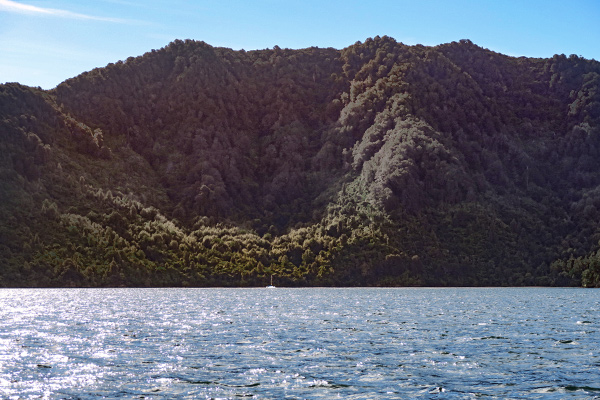
When we entered Kumutoto, we’d found a remarkably beautiful spot surrounded by steep mountains and lush native forest. Because it’s a nature reserve, there are no homes here. When we were settled, we sat out to admire our surroundings. The feeling here is one of being surrounded by towering mountains, one of which slopes down into foothills at its base to create this bay within bigger bay. There was no doubt now we’d made the right decision about staying in Queen Charlotte Sound awhile longer.
Our best moment was sitting outside after dark. There was a light cloud layer which covered most of the stars but gave the scene a certain warmth. We couldn’t see details, but we could see the silhouettes and shapes of the mountains and headlands around us. A small power boat had come into the bay, and a warm yellow light glowed from behind his curtains like a lantern. The water was glassy and still, and we could hear the call of moreporks (little owls) from the trees. The overall feeling was one of such peace and serenity; this felt like a New Zealand version of that classic Christmas Corona commercial.
Just then we heard a breath from the water, then a few more after that. It seems we had a visiting sea lion or two. This was one of those particularly magical moments that come around only once in awhile, no matter where you are, and it’s so good to pause and appreciate them.
Below, a few photos from Kumutoto Bay. Click to enlarge and scroll.–Cyndi

